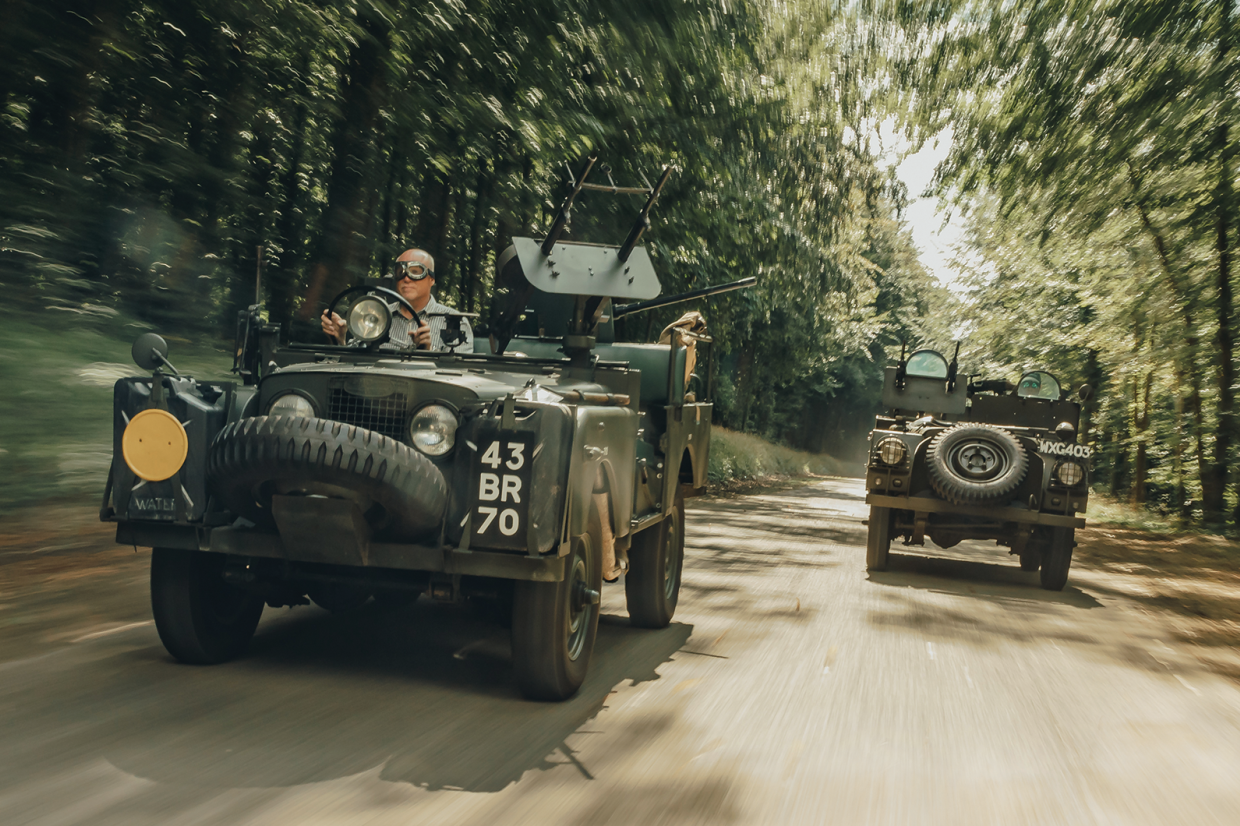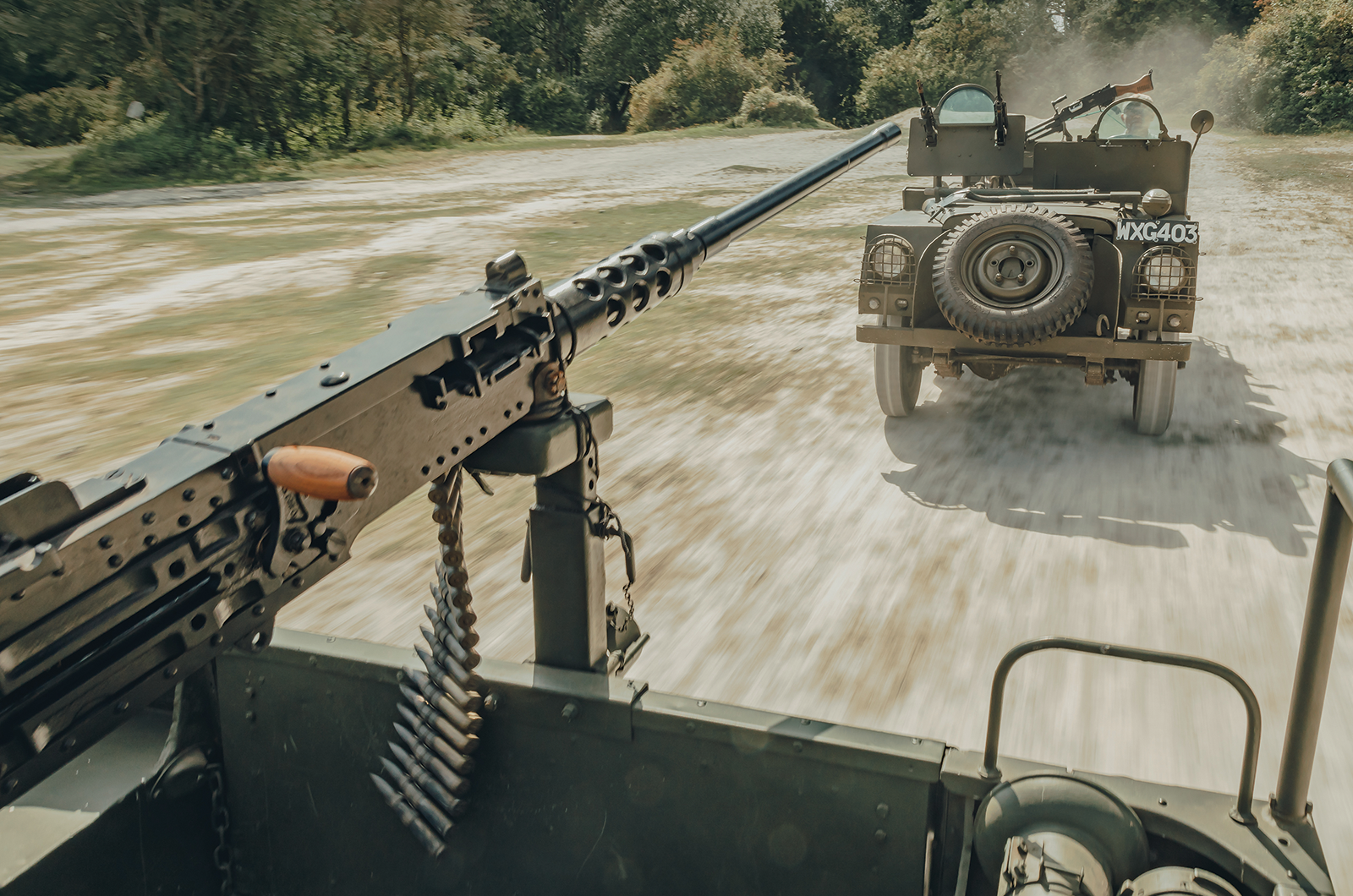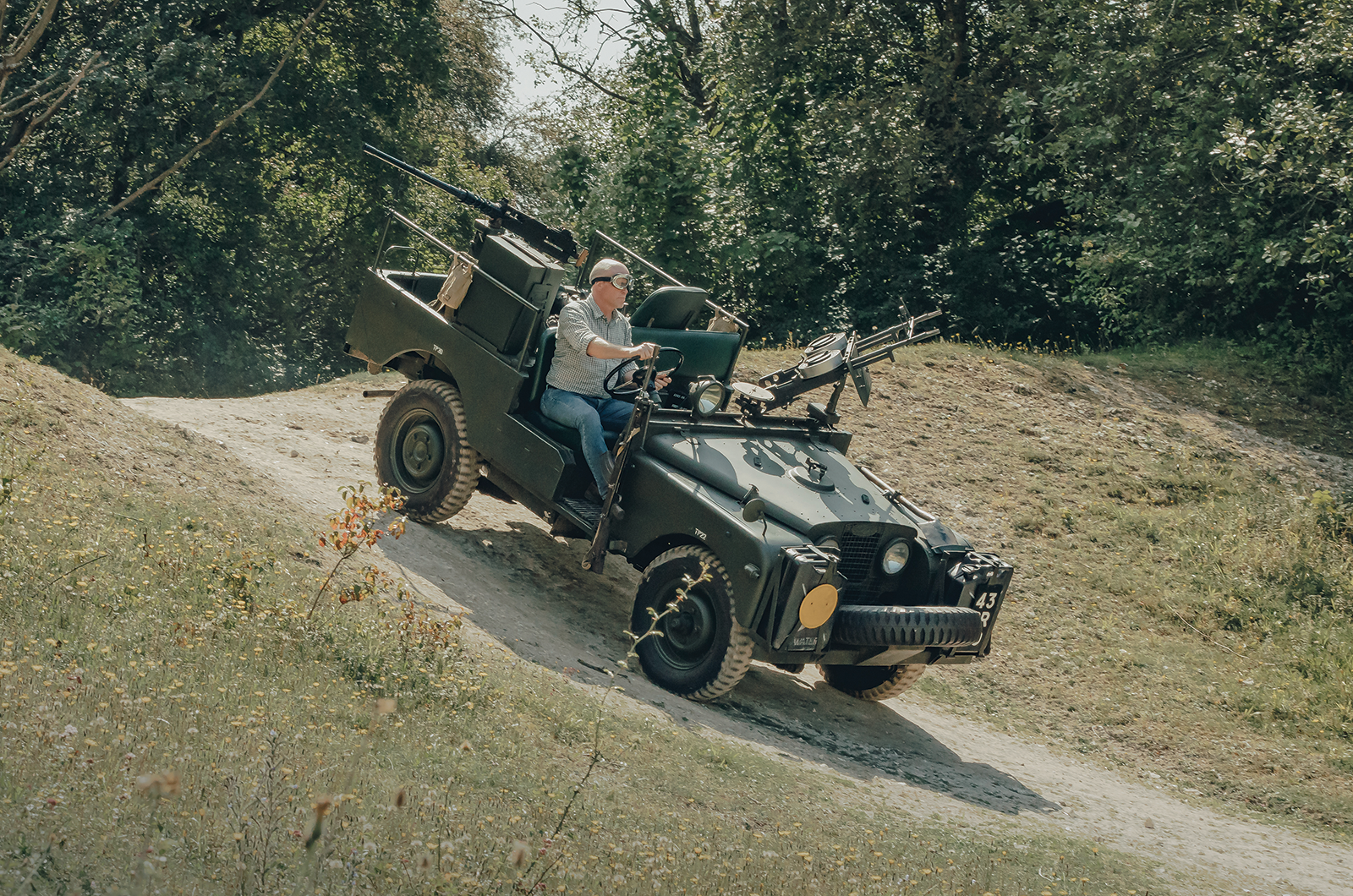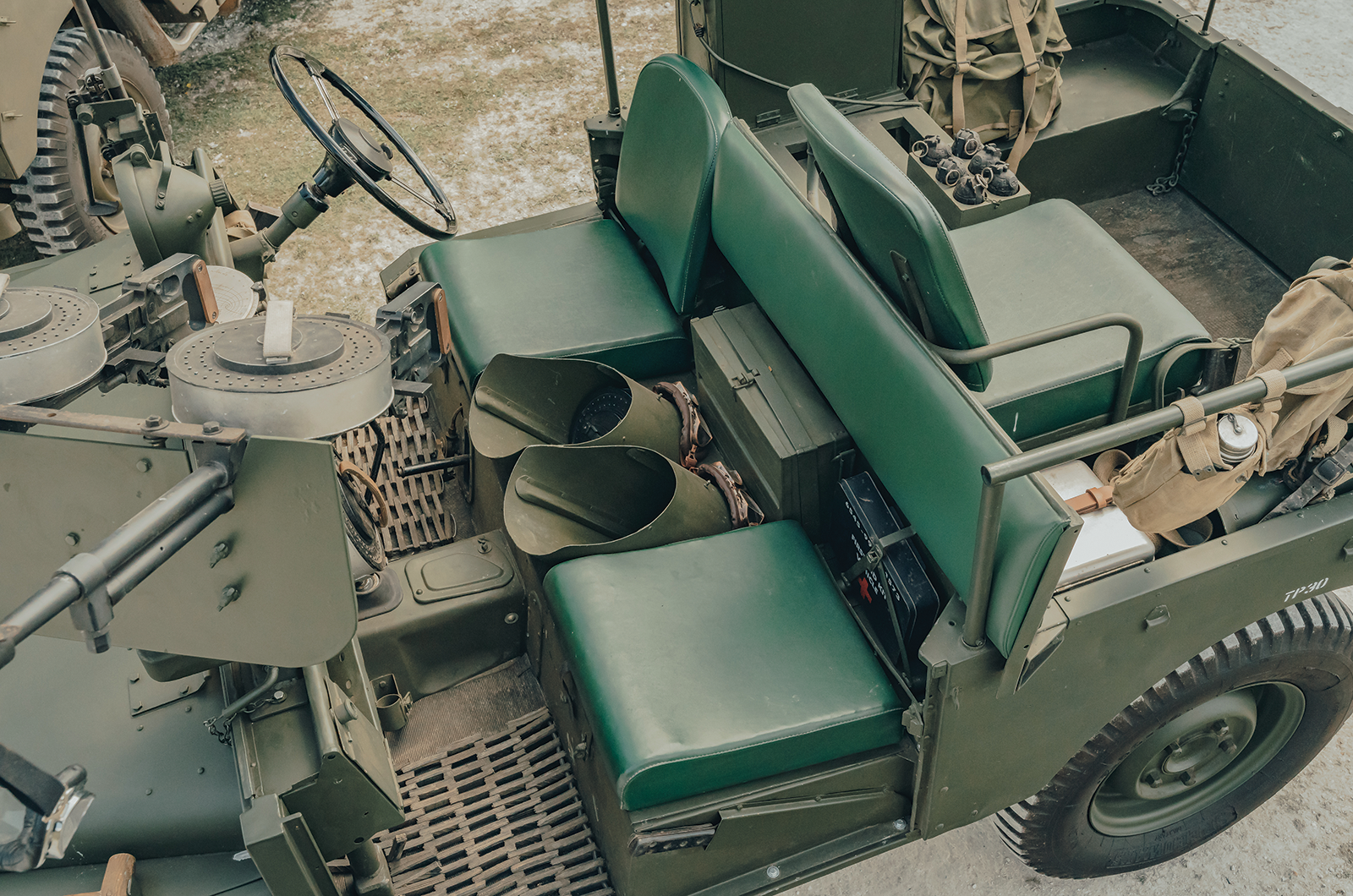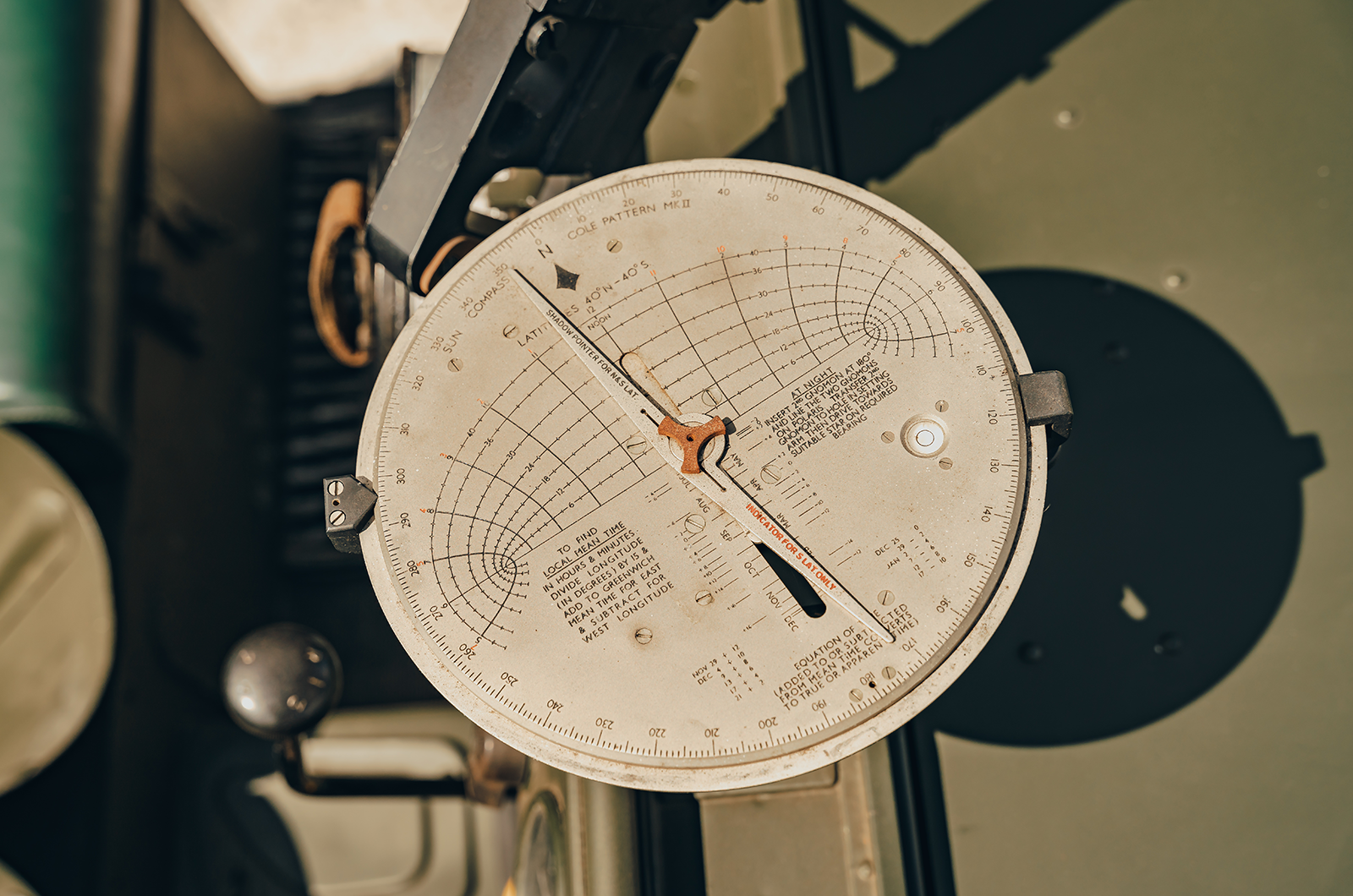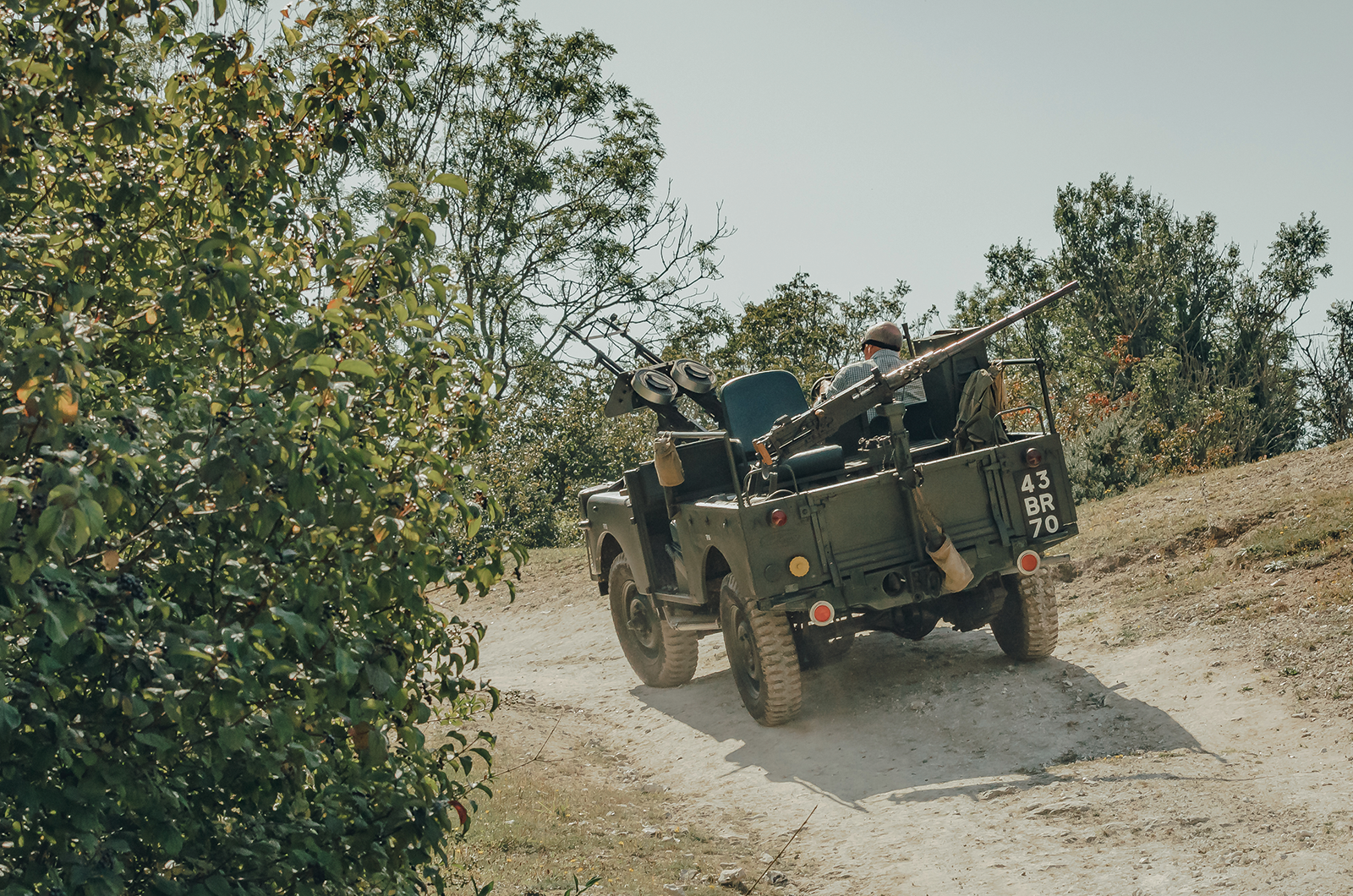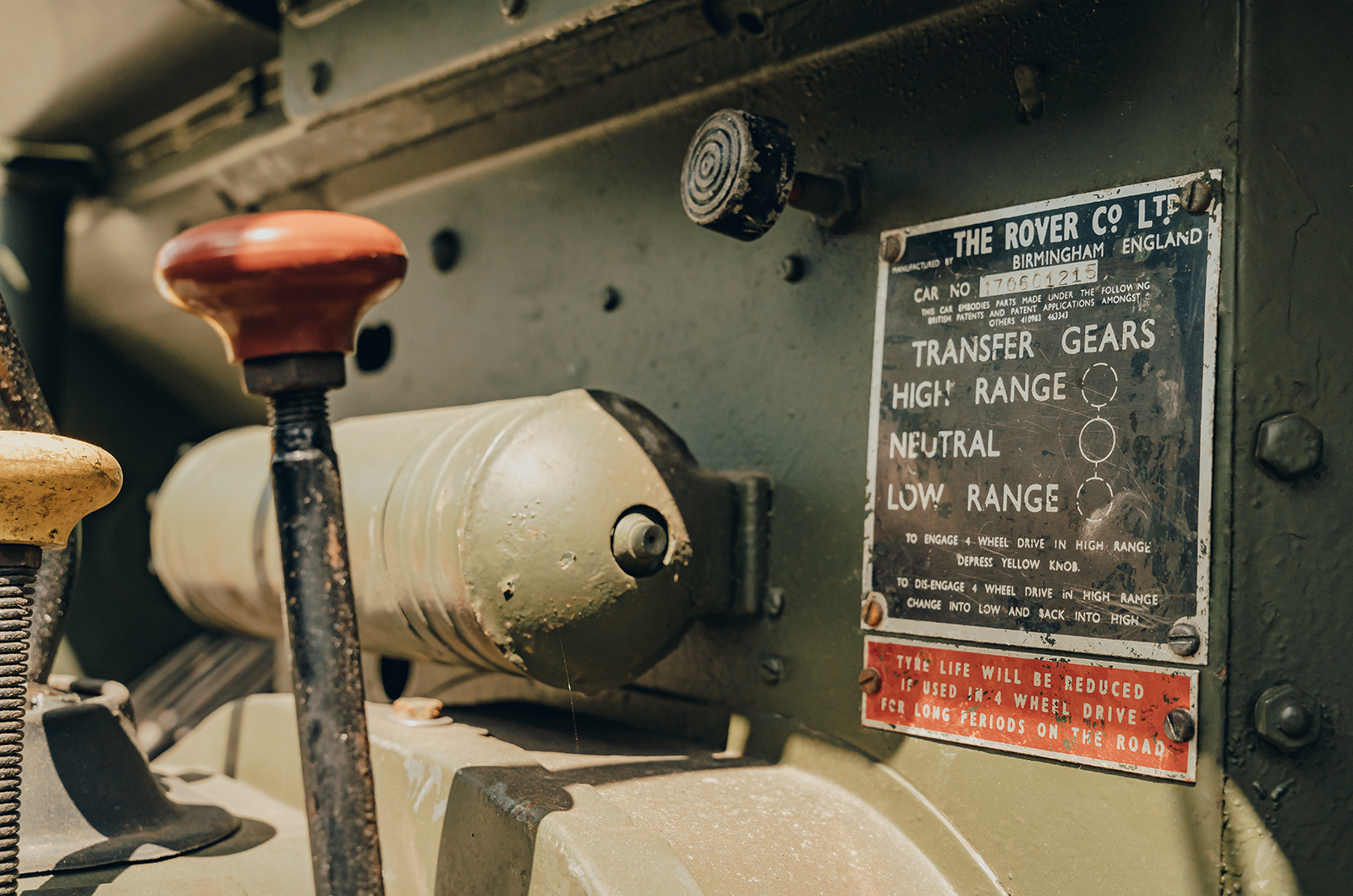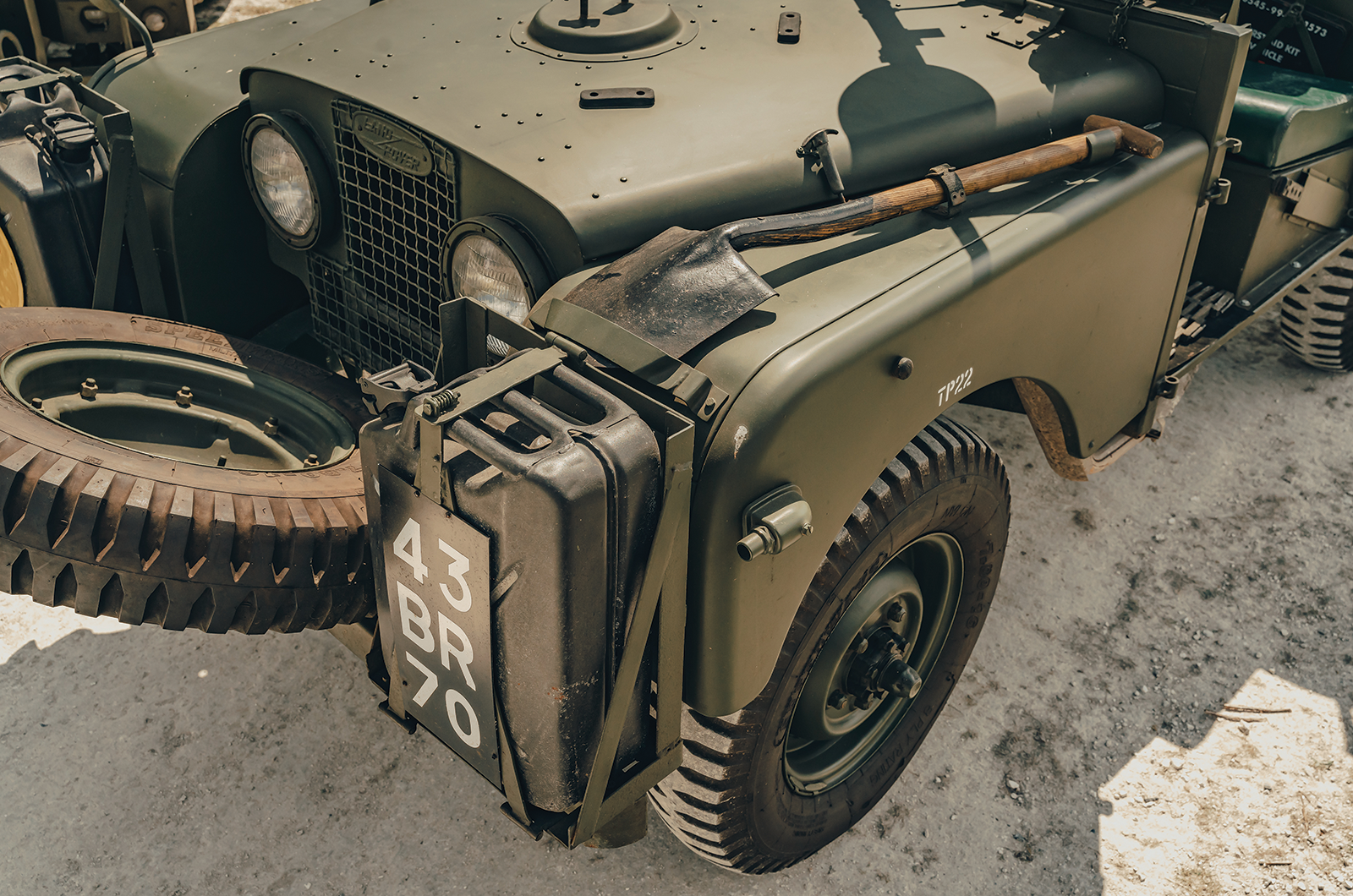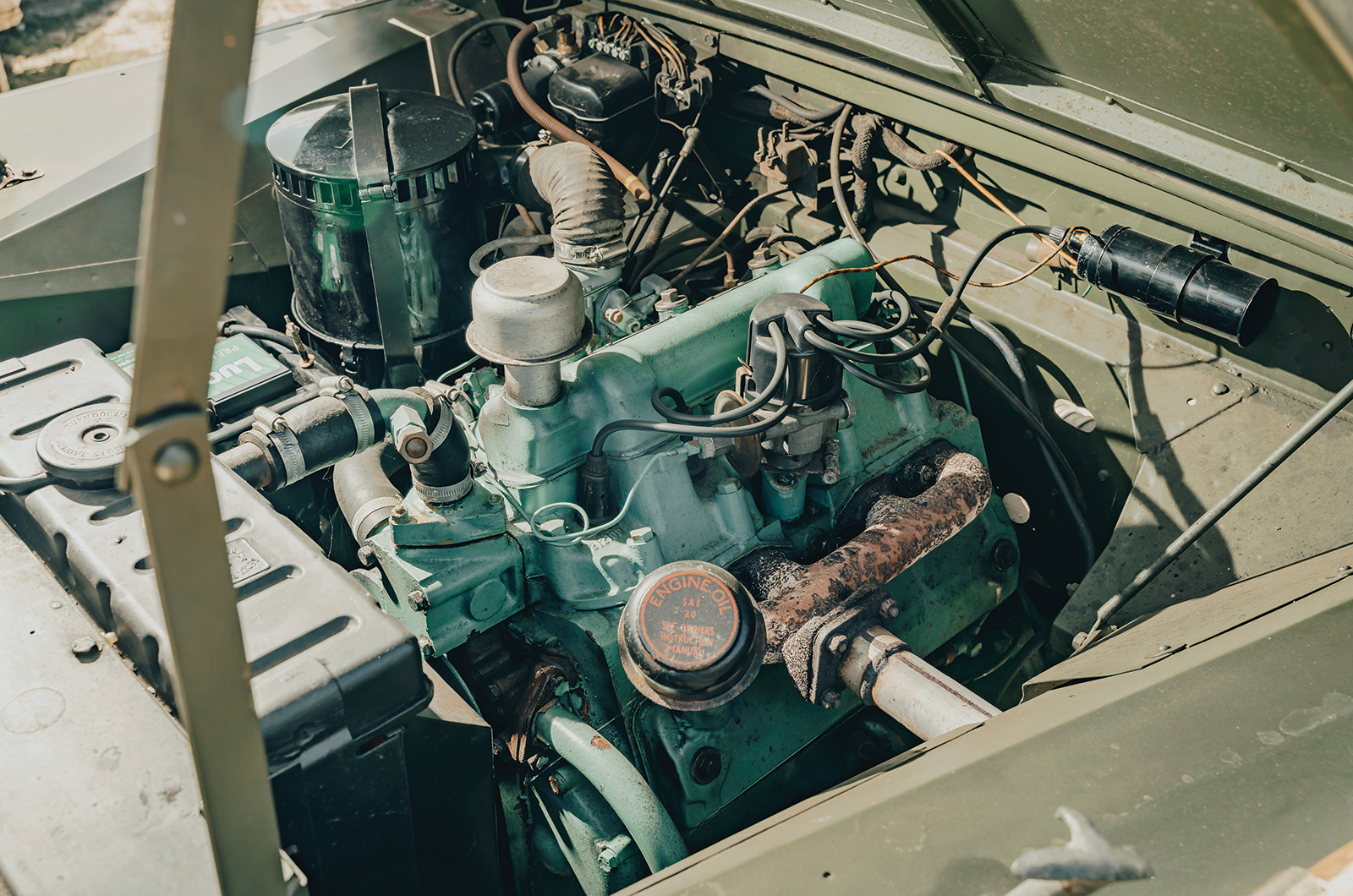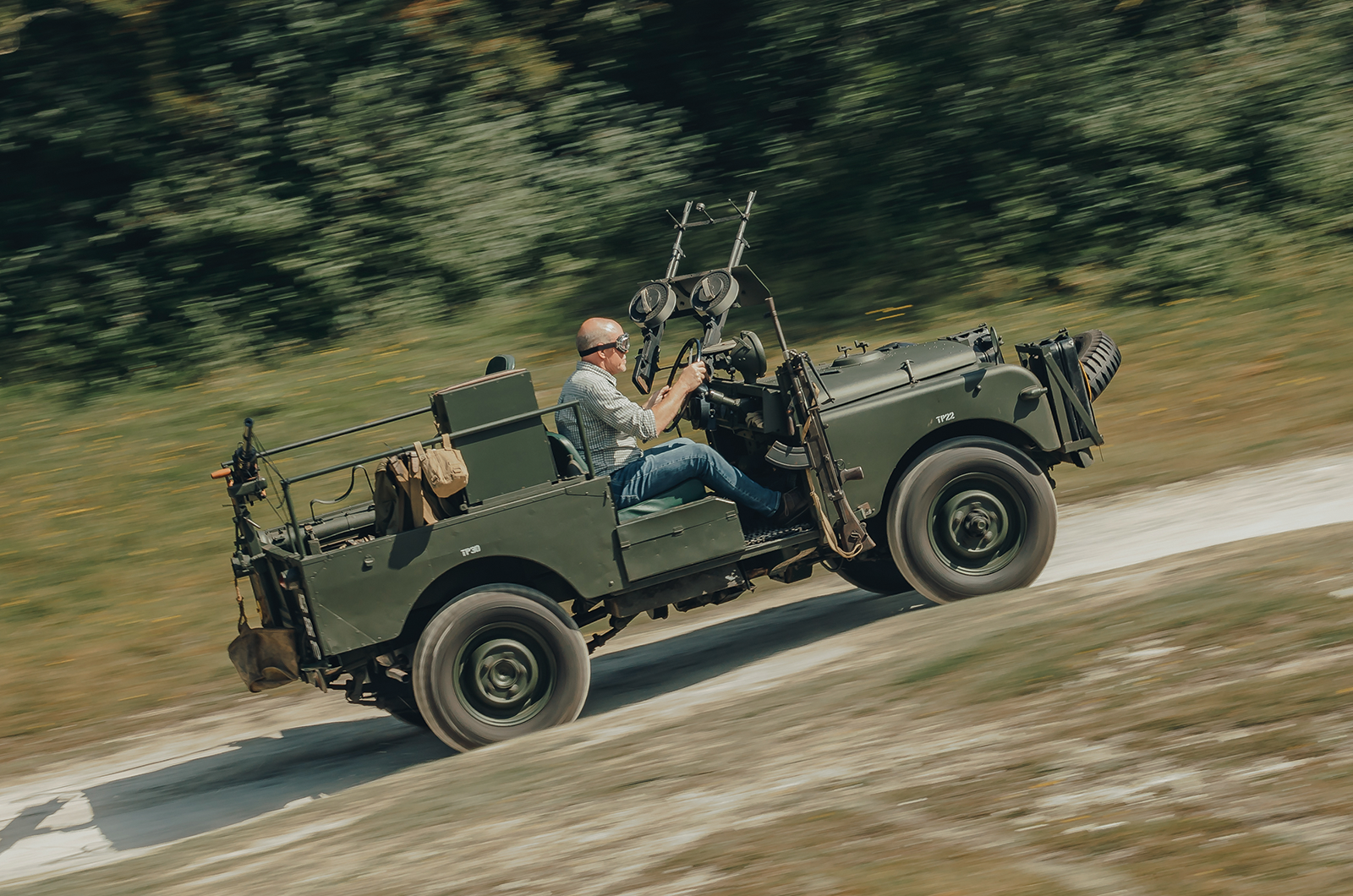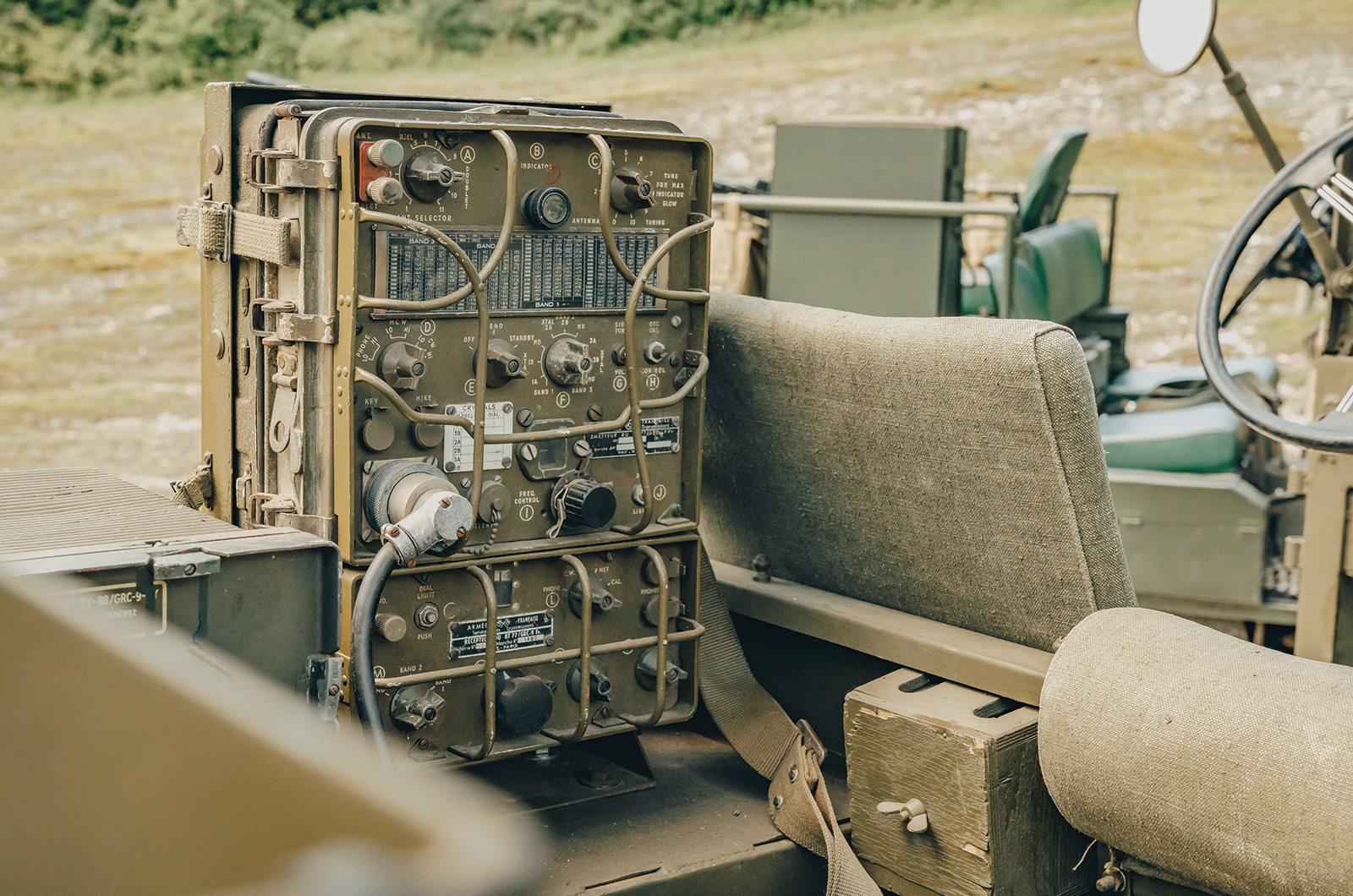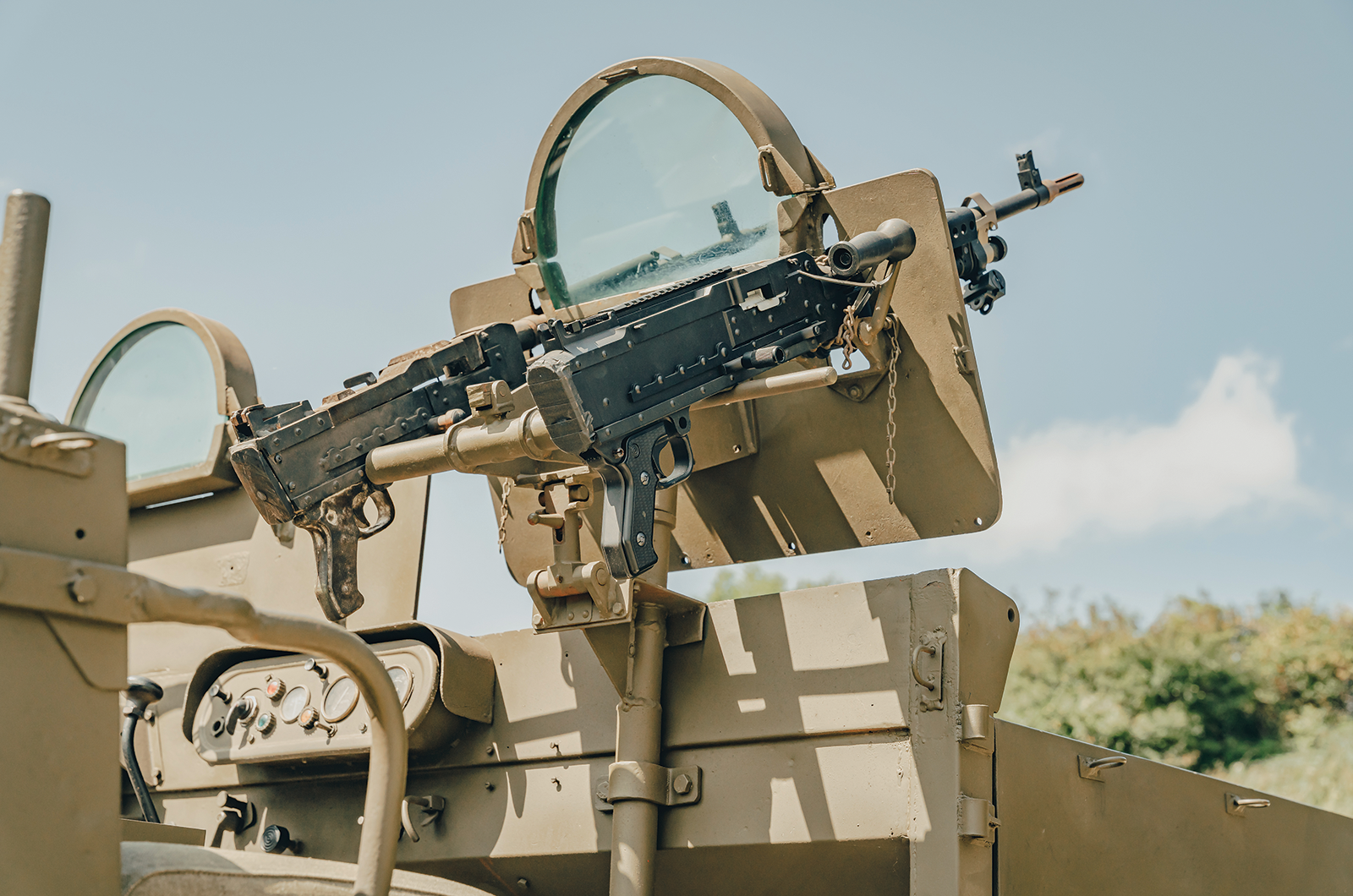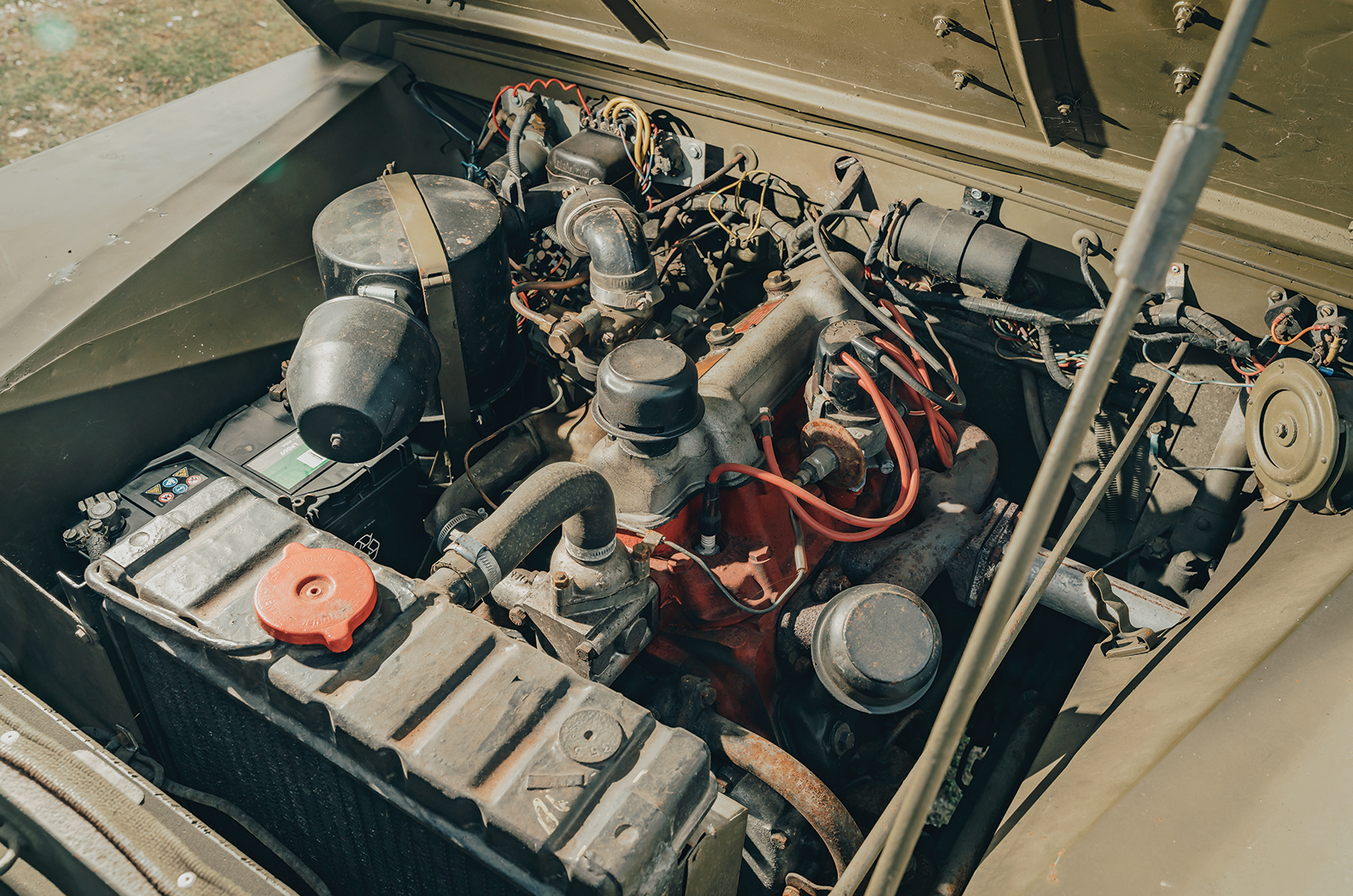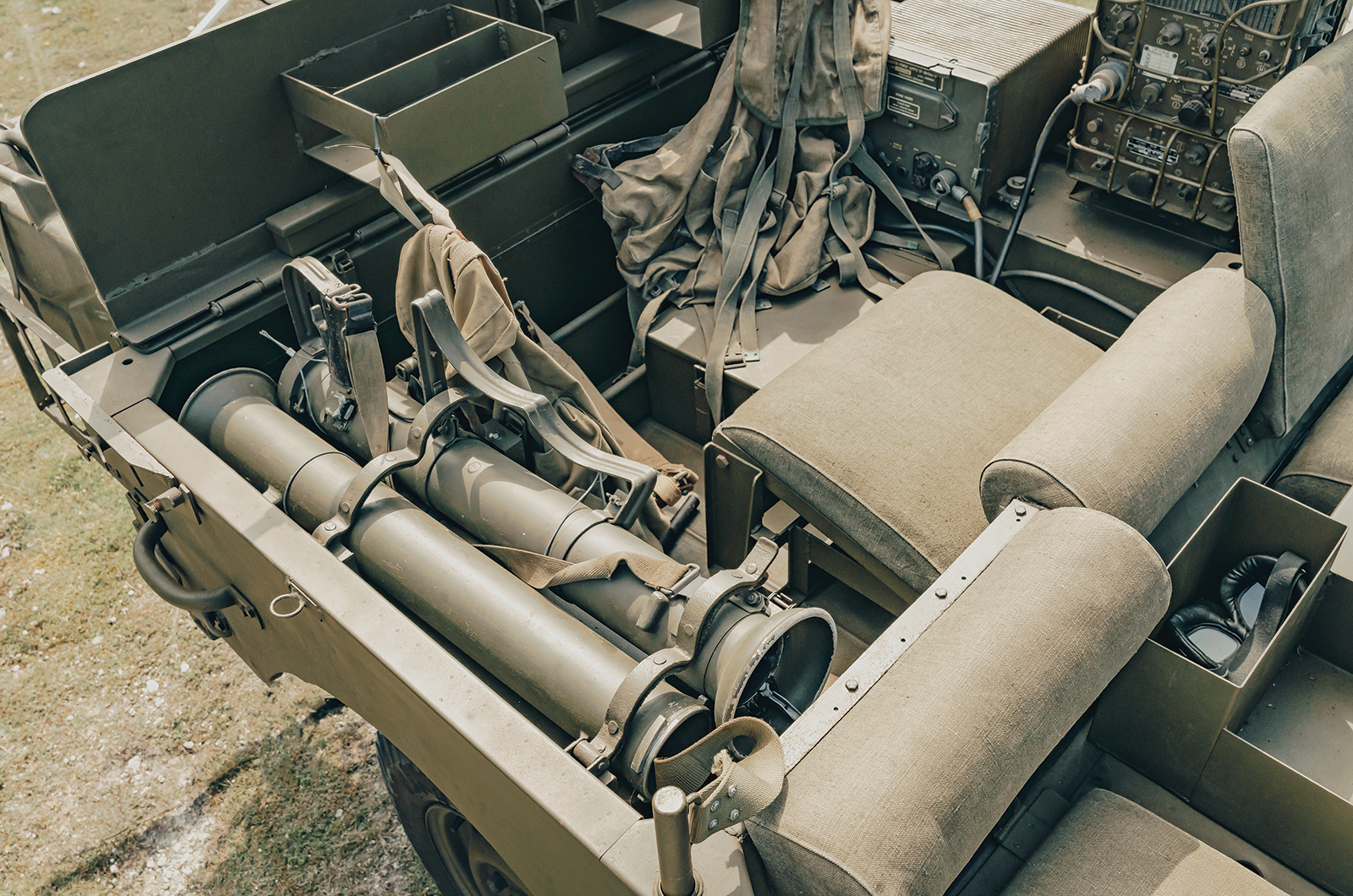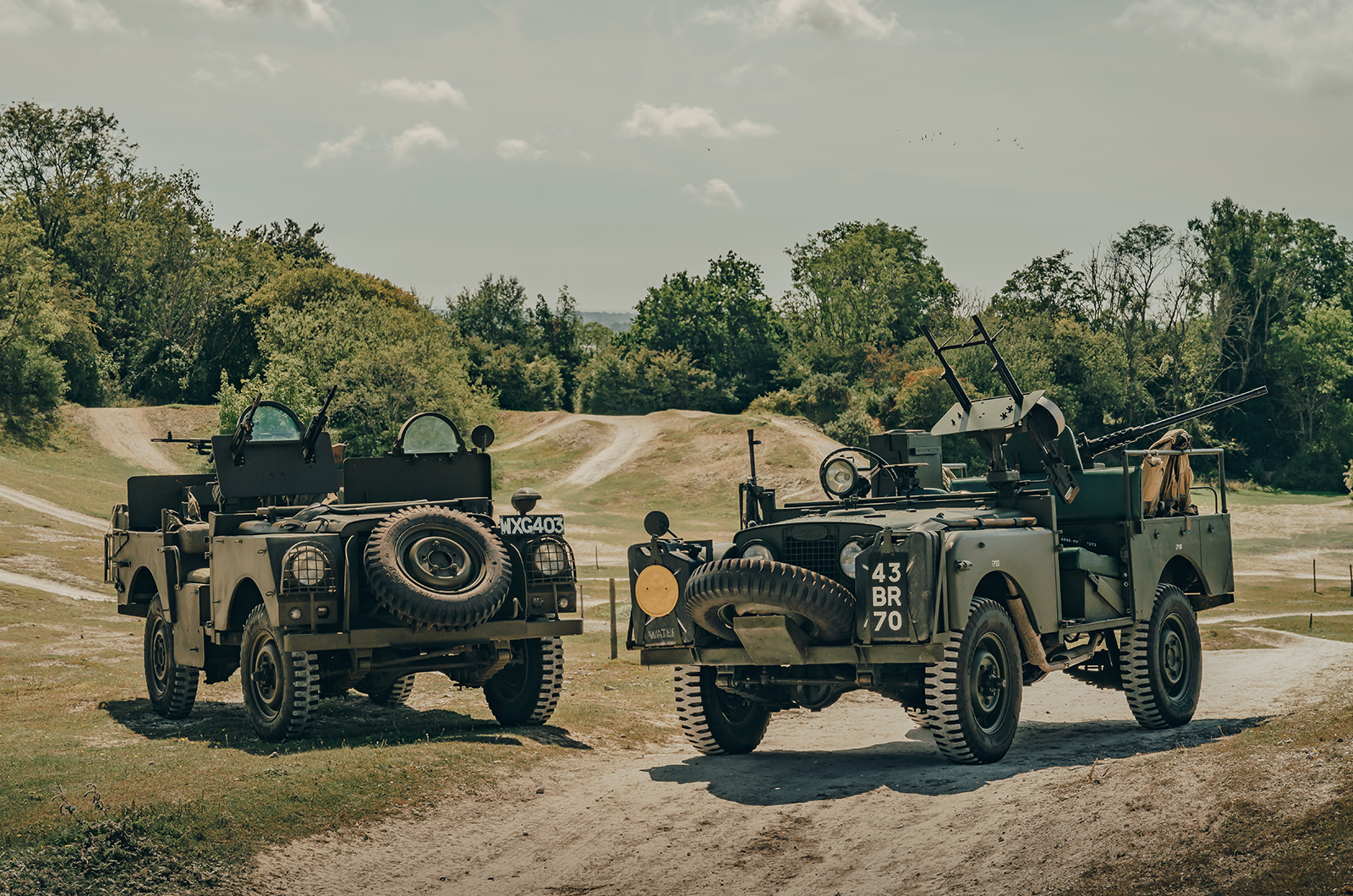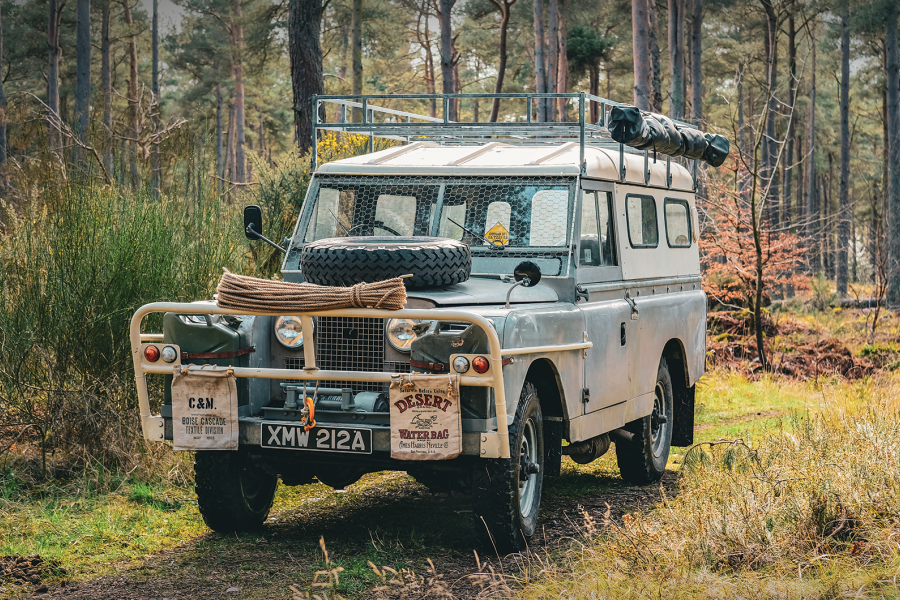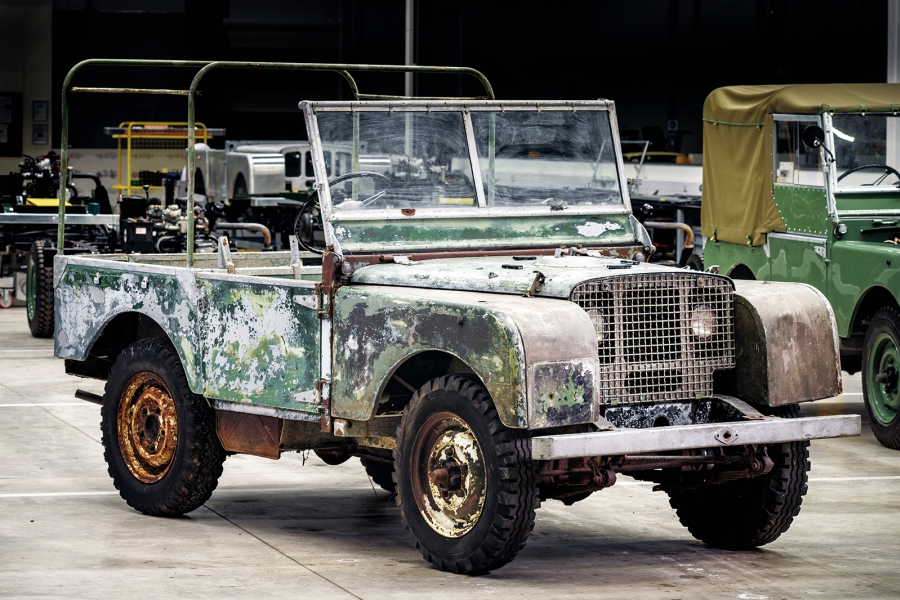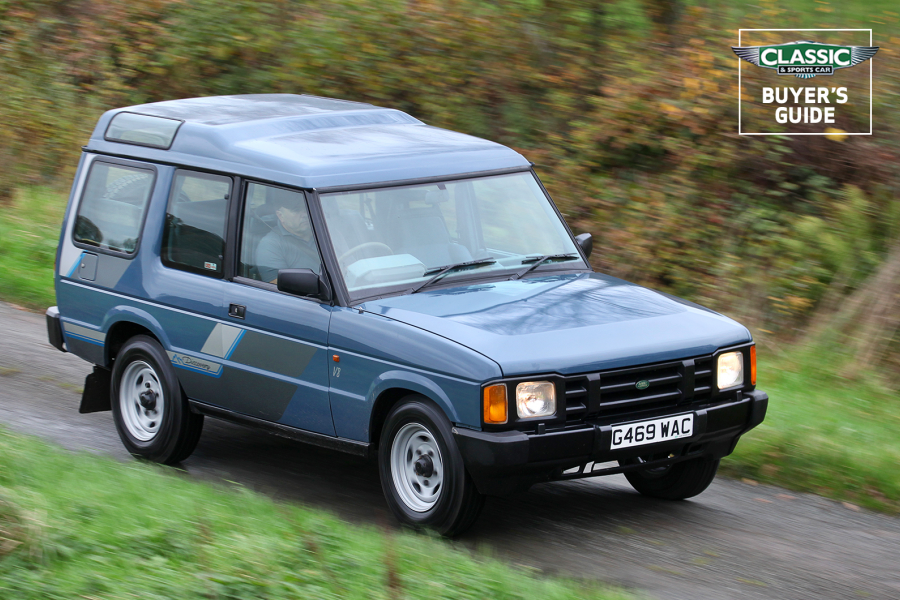By the end of 1953, Solihull had supplied 7859 CKD kits to the firm, including a small number of 86in chassis introduced that year, many of which were reportedly stockpiled by the Belgian military and not put into service until years later.
Minerva never truly recovered after the spat with Land-Rover and, despite launching its own, still-similar C20 model soon after, the company closed its doors in 1956.
To experience the Minerva today, alongside the vehicle that donated its underpinnings, is something of a revelation.
You can see this mutant Land-Rover clone for what it really is: a doorless, angular platform, stripped of any design niceties, on to which is attached enough lethal accessories to take it to Armageddon and back.
Minerva’s Blindé reconnaissance vehicle packs a hefty radio unit behind the driver
Substantial frontal armour distinguishes the Minerva from the SAS carrier; sit in the left-hand, cloth-trimmed driver’s seat (all Minervas were LHD) and an upright steel shield juts from the scuttle, topped by a semicircular ’screen incorporating thick, bulletproof glass.
The assembly is duplicated on the passenger side, but is rotatable, allowing the commander to unleash a torrent of fire from the integrated machine gun. Very Mad Max.
Press the metal starter button and there’s no mistaking the burbling exhaust note from the Rover ‘four’.
The clutch is inexplicably light, with a short amount of travel, and while the gear gate feels tiny, the long, kinked lever demands a high degree of accuracy to select ratios.
The Minerva has a pintle-mounted gun turret in front of the passenger seat
Driving the Minerva on the public road is comedic for two reasons: first, the reaction of following motorists to the rear-facing (replica) machine gun bungeed to its carrier; and, second, because steering this four-wheeled weapon on Tarmac gives only a vague approximation of your intended direction.
Which is a trait shared with its SAS Land-Rover sibling. This prototype is unique as the only such vehicle built on an 86in-wheelbase chassis, with the other prototype and subsequent eight production units using 88in underpinnings.
Originally supplied to the 21st Base Vehicle Depot in Feltham, Middlesex, on 14 November 1955, it had a long (and mainly secret) tour of duty, during which it is believed to have seen action in Oman.
The Minerva’s scuttle features bulletproof glass
On 13 December 1967, it left active service and was sent to the Army’s Storage and Disposal Depot in Riddington, Nottinghamshire.
It has since resided in a private collection, following a painstaking restoration carried out from 2013-’15.
Being a later model than the Minerva, its dash layout differs slightly, with two larger clocks – one for speed, one combining amps and fuel readings – located centrally, but all other main controls are shared.
‘They gifted their crews an unrivalled mixture of firepower built into one of the most nimble mobile units’
With no ’screen of any type before you, even travelling at 30mph feels like a feat of endurance, but, like the Minerva’s, the steering is just as defiantly vague in its operation.
I’m told that, thanks to its extra weight, the Minerva should ride better than the Land-Rover, but, perhaps because of the latter’s 6in-longer wheelbase, there’s little to choose between the two, with both surprisingly supple on-road.
Overall, the Land-Rover is the more refined car, with less engine roar and superior structural integrity.
Rover’s torquey 2-litre four-cylinder engine is back in action in the Minerva
As it turns out, the SAS would have stolen a march on their Belgian counterparts when their vehicles headed off-road, too.
Scaling the vertiginous topography of our chalky test track, both vehicles are hugely capable.
Push down their yellow-topped levers to engage four-wheel-drive, pull back the red-topped ones for low range and they’re unstoppable, ascending loose-surfaced hillocks without drama and tackling sharp descents without any need to trouble the brakes.
Even their steering, which was so clumsy on the road, feels adroit and reassuring off it, though with next to no self-centering you have to be quick to unwind the lock in either vehicle.
There’s a cache of rocket launchers for the Minerva’s rear passenger
The Land-Rover makes the best out of its meagre 101lb ft of torque (delivered at a commendably low 1500rpm), giving it an agile edge that the heavier Minerva can’t quite match.
We may never know the true contribution these diminutive fighting machines made in their respective theatres of war, but they surely gifted their crews with an unrivalled mix of protection and firepower built into remarkably fleet and nimble mobile units, the like of which we may never see again.
Images: Max Edleston
Thanks to: Goodwood; Mark Gold and Jonathan Gill, Bonhams|Cars; John Mastrangelo; Julian Shoolheifer
Factfiles
Land-Rover Series One 4x4 SAS prototype
- Sold/number built 1954-‘57/10
- Construction steel ladder-frame chassis, aluminium body
- Engine all-iron, overhead-inlet/side-exhaust-valve 1997cc ‘four’, Solex carburettor
- Max power 52bhp @ 4000rpm
- Max torque 101lb ft @ 1500rpm
- Transmission four-speed manual, synchromesh on third and fourth, dual-range transfer box, 4WD
- Suspension beam axles, semi-elliptic springs, telescopic dampers f/r
- Steering worm and nut
- Brakes drums
- Length 11ft 8½in (3570mm)
- Width 5ft 1in (1550mm)
- Height n/a
- Wheelbase 7ft 2in (2180mm)
- Weight 4704lb (2134kg, laden)
- Mpg n/a
- 0-40mph 24.4 secs
- Top speed n/a
- Price new n/a
- Price now £70-100,000*
Minerva 4x4 Blindé Parachute Reconnaissance Vehicle
- Sold/number built 1952-’53 (converted 1955)/36-60 (est)
- Construction steel ladder-frame chassis, steel body
- Engine all-iron, overhead-inlet/side-exhaust-valve 1997cc ‘four’, Solex carburettor
- Max power 52bhp @ 4000rpm
- Max torque 101lb ft @ 1500rpm
- Transmission four-speed manual, synchromesh on third and fourth, dual-range transfer box, 4WD
- Suspension beam axles, semi-elliptic springs, telescopic dampers f/r
- Steering worm and nut
- Brakes drums
- Length 11ft (3350mm)
- Width 5ft 1in (1550mm)
- Height n/a
- Wheelbase 6ft 8in (2030mm)
- Weight 5035lb (2284kg, est)
- Mpg n/a
- 0-60mph n/a
- Top speed n/a
- Price new n/a
- Price now £20-30,000*
*Prices correct at date of original publication
Enjoy more of the world’s best classic car content every month when you subscribe to C&SC – get our latest deals here
READ MORE
Alpine trial: Willys MB Jeep vs Alfa Romeo 1900M AR51 vs Fiat 1101 Campagnola
Camel Trophy: when the going gets tough
Buyer’s guide: Army Jeeps
Simon Hucknall
Simon Hucknall is a senior contributor to Classic & Sports Car
